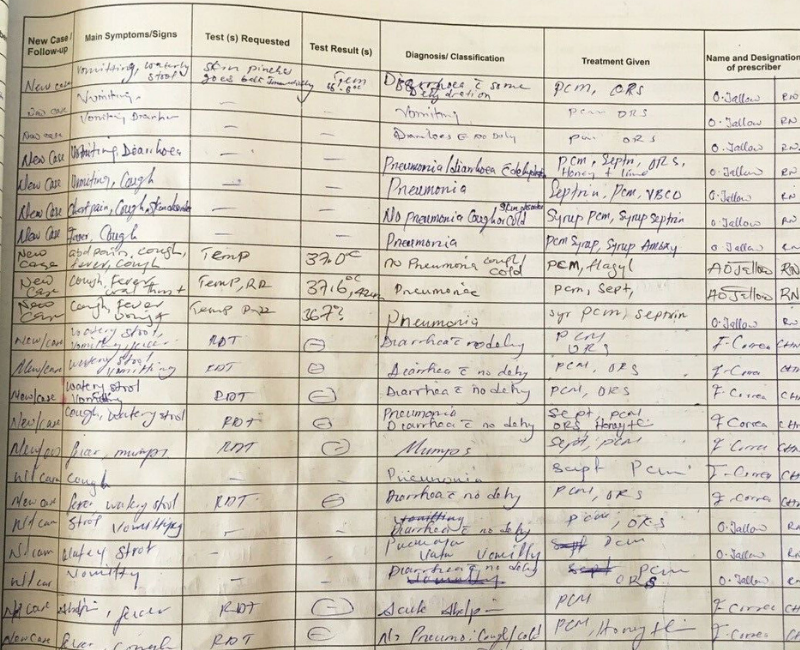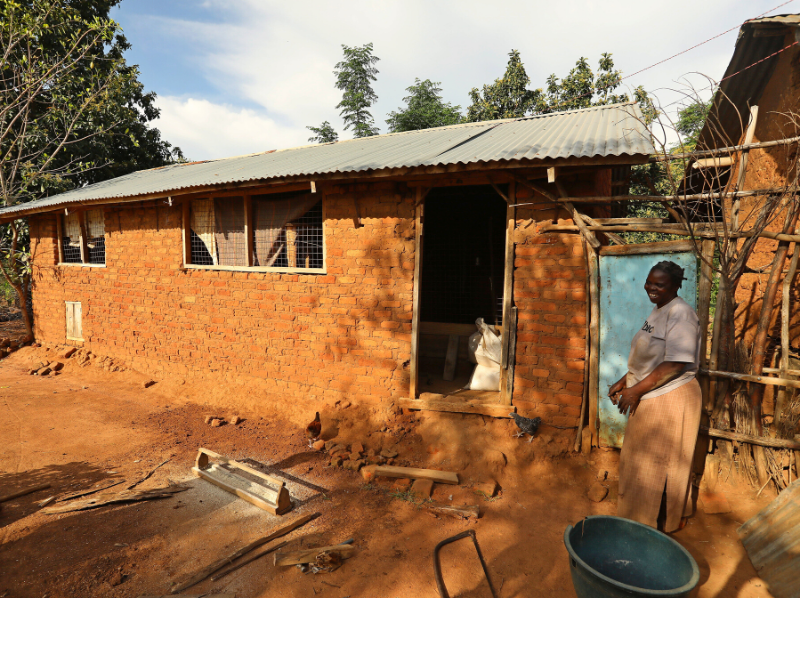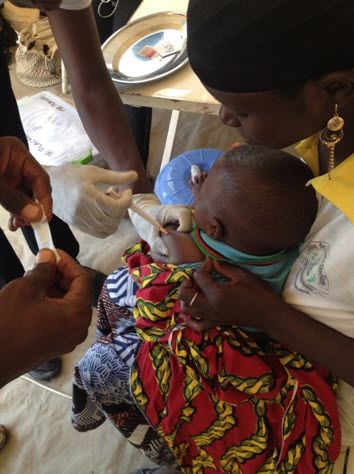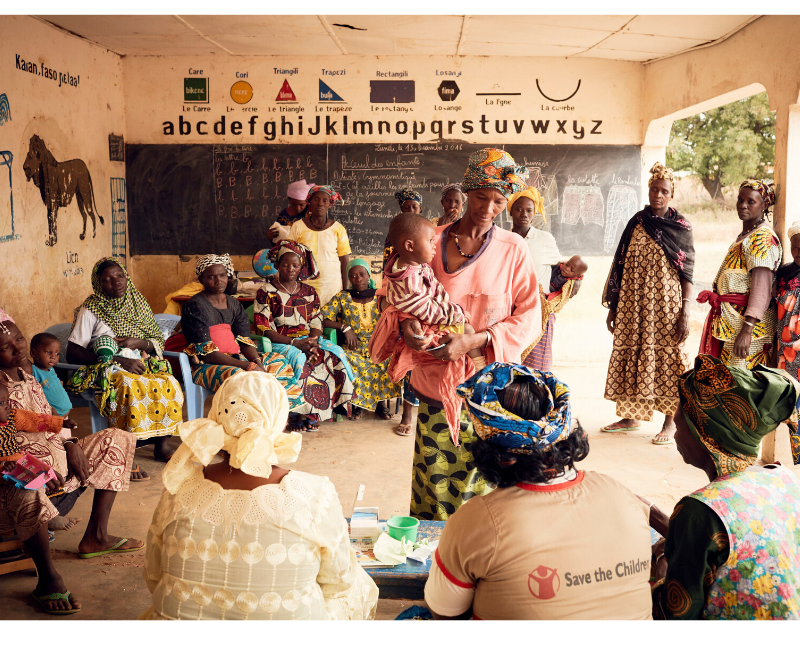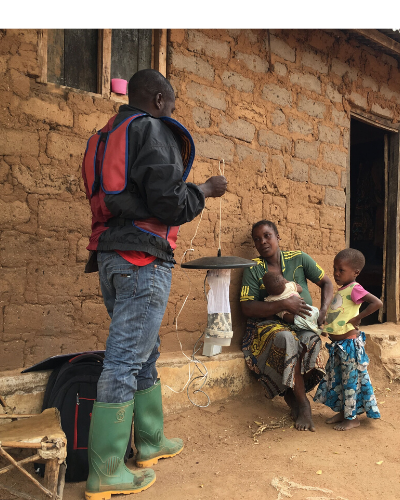Economic evaluation of a reactive household-based self-administered treatment against residual malaria transmission in The Gambia (RHOST)
Location of study: The Gambia
LSHTM Investigators: Shunmay Yeung, Marco Liverani, Harriet Lawford
External collaborators: Jacques Derek Charlwood, (Liverpool School of Tropical Medicine)
Funding Body: Joint Global Health Trials scheme (UK Department for International Development, Medical Research Council, Wellcome Trust)
As countries move towards malaria elimination, there is a need for sustainable interventions targeting the residual parasite transmission that is due to human reservoirs. We are conducting an economic evaluation of the he RHOST trial which aims to assess the effectiveness of treating all members of the compound of confirmed cases.
The RHOST cluster randomized trial has been implemented since 2016 in the North Bank East region of the country by the MRC unit The Gambia at the LSHTM. When a malaria case from one of the study intervention villages is detected, all individuals living in their compound are treated by the community health worker with dihydroartemisinin-piperaquine. The economic evaluation is conducted alongside the trial. We are collecting primary costs data from the trial.
After analysing the financial and economic costs of delivering the intervention under trial conditions, we will estimate, through modelling, the resources needed for its implementation in operational circumstances in The Gambia. Preliminary results show that the main costs drivers of the intervention, are the field staff employment and transports costs. We are collecting more detailed data on personnel and transport time, in order to inform the allocation of resources to each set of activities. These data will be used to refine our assumptions regarding the exclusion of research costs and the integration of the RHOST approach in the Gambian national malaria elimination strategy.
Understanding how and why antimicrobials are deployed in everyday life in Uganda: an ethnographic study of lives, livestock and livelihoods
Location of study: Tororo, Uganda, East Africa
LSHTM Investigators: Susan Nayiga, Dr. Clare Chandler, Dr. Laurie Denyer Willis, Prof. Sarah Staedke
Funding Body: The Antimicrobials in Society (AMIS) Project Uganda funded by the Antimicrobial Resistance Cross Council Initiative supported by the seven research councils in partnership with other funders.
This research is investigating the role of antimicrobials including antimalarials in everyday day life with a focus on a rural setting in comparison with data from urban and periurban settings. The research is focusing on societal rather than individual behavioural factors that shape the ways antimicrobials are deployed in Ugandan society today. Antimicrobial resistance (AMR) is a threat to public health worldwide. To minimize the spread of AMR, policy makers have emphasized the need to reduce the use of antimalarials and antibiotics, but this is a challenging task.
In Uganda, antimicrobial use including use of antimalarials appears to be increasing, yet there is limited evidence on this phenomenon in the rural settings. This research is investigating the role of antimicrobials in everyday day life with a focus on a rural setting. Results will be compared with data from urban and peri-urban settings that is currently ongoing. The research is examining the wider social, economic and political factors that shape the ways antimicrobials are deployed in Ugandan society today. The research is employing ethnographic methods, involving extended fieldwork with participant observations and interviews conducted in Tororo district, eastern Uganda over a period of 15 months. It is primarily focusing on residents of the area and their health care providers in their everyday life, and the ways in which they use these medicines to care for households including humans, animals and crops. By moving beyond looking at individual behavior, this research will provide new insights to guide approaches to reduce reliance on these medicines at the societal level.
Effectiveness and cost-effectiveness of targeted reactive IRS compared with generalised routine IRS – results from a cluster randomised trial
Location of study: South Africa
LSHTM Investigators: Immo Kleinschmidt, Jackie Cook, David Bath, Catherine Pitt, Joseph Biggs
External collaborators: Maureen Coetzee (Wits Research Institute for Malaria, University of the Witwatersrand, South Africa); Natashia Morris, Rajendra Maharaj (South African Medical Research Council, South Africa); Aaron Mabuza (Mpumalanga Provincial Malaria Control Programme, South Africa)
Funding Body: Joint Global Health Trials (MRC/DFID/ Wellcome)
In areas of very low, pre-elimination malaria transmission the low number of incident cases may call into question the resources needed for spraying all houses annually with insecticide (generalised indoor residual spraying (GIRS)). An alternative that may be more cost-effective is to target IRS, reactively spraying only houses in the immediate neighbourhood of incident cases as they arise.
62 clusters consisting of settlements of approximately 5000 persons each in the provinces of Mpumalanga and Limpopo in South Africa, were randomly allocated to receive the currently practised GIRS whilst the other half received reactive targeted IRS (TIRS) in the immediate neighbourhood (about 8 houses) of every passively reported local case. Non-inferiority of TIRS was assessed as passive incidence of no more than 1 case/1000 per year above that of the GIRS arm. Financial and economic costs of IRS implementation, treatment costs of malaria cases, and associated patient costs were calculated using data from the trial, provincial MCPs, and secondary sources.
Incidence in the targeted IRS was higher than in the generalised IRS arm by 0.29 cases per 1000 (95% CI -0.53-1.10). The total cost of TIRS was around 40% of the cost of GIRS, due to reductions in insecticide and contracted sprayers. The mean incremental cost of GIRS relative to TIRS was $75,000 per local malaria case averted in the lower transmission season and $5,000 per local malaria case averted in the higher transmission season, neither of which are cost-effective. Although evidence of non-inferiority of TIRS compared to GIRS was weak, TIRS appears to be a safe, more sustainable method of deploying IRS in areas of very low transmission. The resources saved could be redeployed more effectively and cost-effectively, for example, in improved surveillance, promotion of care seeking, and improved case management.
Antimalarial treatment of asymptomatic school-age children to decrease Plasmodium falciparum infection and anaemia: A systematic review and metaanalysis
Location of study: Multiple countries in Africa
LSHTM Investigators: Matthew Chico, Charles Opondo, Katherine Halliday, Jorge Cano, Elizabeth Allen, Sian Clarke
External collaborators: Lauren Cohee, Andrea Shipper, Miriam Laufer (University of Maryland, USA)
We have conducted the first meta-analysis to our knowledge of published and unpublished data from school-based malaria intervention trials. We present study-level results and an individual participant meta-analysis with effects stratified by treatment type, follow-up period, and intervention strategy to draw important conclusions about the utility of schoolbased interventions on malaria infection and anaemia. We also examine the effect of malaria transmission intensity on the treatment outcomes.
Preliminary results based on data from 16,551 children and 11 studies show that the risk of malaria infection is significantly lower in intervention arms compared to control arms. There was a small but statistically significant reduction in risk of anaemia. Despite historic levels of funding over the past dozen years and progress towards malaria elimination, these gains are in jeopardy. New interventions are urgently needed that target, in particular, populations that are responsible for human to mosquito transmission. Overall, this analysis supports consideration of policy on and programmatic implementation of antimalarial treatment of asymptomatic school-age children as an intervention to decrease the burden of malaria in this critical age group.
A Phase IIIB comparative trial of seasonal vaccination with the malaria vaccine RTS,S/AS01, seasonal malaria chemoprevention and of the two interventions combined
Location of study: Bougouni district, Mali, and Hounde district, Burkina Faso
LSHTM Investigators: Brian Greenwood, Daniel Chandramohan, Paul Millligan, Matthew Cairns, Irene Kuepfer
External collaborators: Ogobara Dumbo, Alassane Dicko & Issaka Sagara (MRTC, Bamako, Mali); Jean Bosco Ouedraogo, Issaka Zongo & Halidou Tinto (IRSS, BoboDioulasso, Burkina Faso)
Funding Body: MRC/DFID/Wellcome Trust Global Health Trials program
Seasonal Malaria Chemoprevention (SMC) reduces malaria morbidity and mortality in children below 5 years of age. However, SMC administration is challenging and does not provide full protection. We are assessing whether seasonal vaccination with RTS,S/AS01 could be used as an alternative to SMC and whether the combination of the two interventions would provide added benefit.
Seasonal Malaria Chemoprevention (SMC), which involves monthly administration of sulphadoxine-pyrimethamine plus amodiaquine (SP+AQ) given at monthly intervals during the high malaria transmission season, is currently being implemented in 12 countries in the Sahelian and sub-Sahelian regions of Africa. SMC is having a major impact on malaria in the populations where it is being given, but it does not provide complete protection and there are concerns over the possible emergence of resistance to the drugs currently being used for SMC. At the moment, there are no other long-acting anti-malarial combinations available to replace them.
The malaria vaccine RTS,S/ASO1 has shown promise, but it provides only a modest level of protection during a three or four year period of follow-up. However, efficacy during the first few months after administration of a three dose course is high, and waning protection can be partially restored by a booster dose. Thus, a potential way of using this vaccine in areas of seasonal malaria transmission is to vaccinate children who have been primed during infancy at the beginning of each malaria transmission season
A trial of seasonal malaria chemoprevention plus azithromycin in African children
Location of study: Bougouni district, Mali, and Hounde district, Burkina Faso
LSHTM Investigators: Brian Greenwood, Daniel Chandramohan, Paul Milligan, Matthew Cairns, Irene Kuepfer
External collaborators: Ogobara Dumbo, Alassane Dicko & Issaka Sagara (MRTC, Bamako, Mali); Jean-Bosco Ouedraogo, Issaka Zongo & Halidou Tinto (IRSS, BoboDioulasso, Burkina Faso)
Funding Body: MRC/DFID/NIHR/Wellcome Trust Joint Global Health Trials scheme
Recent studies have shown that mortality is reduced among African children who received azithromycin during mass treatment programs for the control of trachoma. We investigated whether the addition of azithromycin to monthly sulphadoxine-pyrimethamine plus amodiaquine, used for seasonal malaria chemoprevention, reduces mortality and morbidity in young African children.
We randomised nearly 20,000 children aged 3-59 months by household to receive either a 3-day azithromycin or placebo course four times each year, alongside monthly seasonal malaria chemoprevention. Mortality and morbidity were recorded through active and passive surveillance. During the malaria transmission seasons from 2014-2016 the incidence of deaths or hospital admissions (not due to trauma or elective surgery) was similar in the two study groups. The incidence of febrile illnesses not due to malaria, gastrointestinal and respiratory infection was lower among children who received azithromycin. In conclusion, the findings of this study do not support the addition of azithromycin to the antimalarials used for malaria chemo prevention to reduce child mortality and severe morbidity in the areas of sub-Saharan Africa where seasonal malaria chemoprevention is implemented.
ASPIRE Trial – Aiming for Safe Pregnancies by Reducing Malaria and Infections of the Reproductive Tract
Location of study: Nchelenge District, Zambia
LSHTM Investigators: Matthew Chico, Daniel Chandramohan, Elizabeth Allen, Joanna Sturgess, Philippe, Mayaud, Suzanna Francis
External collaborators: Nigel Klein, (University College London, UK), David MacIntyre, (Imperial College London, UK), Antonieta Medina-Lara, (Exeter Medical School, UK), Mike Chaponda, (Tropical Disease Research Centre, Zambia), Modest Mulenga, (Tropical Disease Research Centre, Zambia), Enesia Chaponda, (University of Zambia)
Funding Body: Medical Research Council
LSHTM carried out an observational study study in Nchelenge, Zambia between 2013-14 and found that 58% of pregnant women had a malaria infection, 48% were diagnosed with bacterial vaginosis (BV), and 26% had Trichomonas vaginalis (TV); 29% had malaria and BV co-infection, and 15% were diagnosed with malaria and TV. In response to this LSHTM is leading a three arm clinical trial designed to reduce the burden of malaria, BV, and TV.
The trial is a partially placebo-controlled individually randomised, superiority trial comparing three intermittent chemoprevention therapies among pregnant women:
- Intermittent preventive treatment (IPTp) using sulphadoxinepyrimethamine (SP) plus metronidazole (MTZ) versus;
- IPTp with dihydroartemisinin-piperaquine (DP) plus MTZ versus;
- IPTp-SP plus placebo MTZ
HIV-negative pregnant women between 16-28 gestational weeks will receive one of these three treatments while attending antenatal care at three health facilities in Nchelenge, Zambia. Therapy will be administered during visit 1 (gestational week 16- 19) and, again, during visit 4 prior to delivery (week 30-34). SP or DP will be administered without MTZ on visit 2 (week 20-24) and visit 3 (week 25- 29). The primary outcome is any adverse pregnancy outcome defined as the composite of foetal loss (spontaneous abortion or stillbirth; WHO ICD-11 definitions), or singleton live births born small for gestational age (SGA), or low birth weight (LBW; <2.5kg), or preterm delivery (<37 weeks), or neonatal death (day 28 post-partum). Secondary outcomes include: single outcomes combined in the composite pregnancy outcome; incidence of clinical malaria; and incidence of curable STIs/RTIs. We will also conduct cost-effectiveness analyses and discrete choice experiments, as well as two sub-studies that are key to interpreting results from the main trial and understanding microbiological mechanics of chemoprevention against adverse birth outcomes and antimicrobial resistance.
Efficacy of two dual active ingredient long lasting insecticidal nets for control of malaria transmitted by pyrethroid resistant vectors in Benin: A cluster randomised controlled trial
Location of study: Zagnanado & Ouinhi, Zou, Benin
LSHTM Investigators: Jackie Cook, Immo Kleinschmidt, Corine Ngufor, Natacha Protopopoff, Mark Rowland
External collaborators: Martin Akogbeto, (Centre de Recherche Entomologique de Cotonou), Aurore Hounto, (Programme National de Lutte contre le Paludisme de la République du Bénin, Tom Churcher, Imperial College)
Funding Body: UNITAID through IVCC
While the scale-up of LLIN has led to major reduction in malaria burden in many African countries, progress is threatened by the selection of insecticide resistant malaria vectors. LLIN with new active ingredients (AI) chlorfenapyr and pyriproxifen which kill or sterilize resistant vectors require evidence of malaria control before they can be recommended by the World Health Organisation. A clusterrandomised controlled trial and concurrent experimental hut trials compares two dual AI LLIN Interceptor G2 (BASF) and Royal Guard (Disease Control technology) to a standard LLIN (only pyrethroid) to prevent malaria in Benin.
This project has two aims. The first is a three-arm superiority, cluster-randomized trial (CRT) to be conducted in highly resistant area of West Africa where Anopheles coluzzii is the predominant vector. The second is to establish whether entomological outcomes generated by experimental hut trials can predict accurately the outcomes of CRT and ultimately replace the need for CRT of future dual AI LLIN. The CRT will be conducted in the Zou department in Benin. The following outcome will be followed incidence of malaria cases in children aged 6 months to 10 years followed for 24 months. Secondary outcomes are cross-sectional community prevalence of malaria infection in the study population at 6- and 18-months post-intervention, prevalence of anaemia in children under 5, entomological inoculation rates (EIR), vector density and insecticide resistance intensity.
Insecticide durability and chemical content In addition, LLIN survivorship, physical durability (hole index), shall be measured at intervals. Data from concurrent experimental hut trials shall be incorporated into malaria transmission models to determine whether these could be used as a proxy for epidemiological trial evidence. A meeting in Benin was held in October 2018 to finalise the protocol and baseline data collection began in 2019.
Efficacy of novel bi-treated long lasting insecticidal nets for control of malaria transmitted by pyrethroid resistant vectors in Tanzania: A cluster randomised controlled trial
Location of study: Misungwi district, Mwanza Region, Tanzania
LSHTM Investigators: Natacha Protopopoff, Mark Rowland, Immo Kleinschmidt
External collaborators: Franklin W Mosha, Alphaxard Manjurano & Jacklin Mosha (Kilimanjaro Christian Medical University College, Tanzania); Manisha Kulkarni, (University of Ottawa, Canada)
Funding Body: Global Health trial DFID/MRC/NIHR/ Wellcome Trust
Malaria control progress is being undermined by the selection of insecticide resistance in the malaria vectors around the Great Lakes region of East Africa. Long Lasting Insecticidal Nets (LLIN) which combine with pyrethroid either the synergist PBO or the insecticides chlorfenapyr and pyriproxifen have the potential to control malaria transmitted in this region. A cluster randomised trial is comparing 3 bi-treated LLIN - Olyset Plus, Interceptor G2, Royal Guard – to a standard pyrethroid LLIN Interceptor in an area of northwest Tanzania where the vectors are resistant to pyrethoids. Findings will be used by WHO to develop new public health policy on the use of these new classes of LLIN.
The project has several objectives. The cluster randomised trial compares the efficacy of the 3 bi-treated LLINs to standard LLIN across the three-year lifespan of the nets with respect to:
- Malaria infection prevalence in children under 15 years
- Prevalence of anaemia in children under 5 years
- Incidence of malaria cases in children under 10 years
- Entomological inoculation rate (EIR) as proxy for malaria transmission
Other objectives are:
- LLIN durability (net survivorship, fabric integrity, duration of partner insecticidal activity).
- Incremental cost-effectiveness, usage, adverse effects, and equity implications of each net type. An additional objective will examine whether experimental hut trial outcomes can serve as a surrogate for epidemiological and transmission outcomes of CRT through transmission modelling (Imperial College). The study is conducted in the district of Misungwi where the main malaria vectors, Anopheles gambiae s.s. and A. funestus are resistant to pyrethroids. Baseline data collection was completed in 2018 and LLIN were distributed in January 2019.
Implications of insecticide resistance for malaria vector control with long-lasting insecticidal nets
Location of study: Benin, Cameroon, India, Kenya, Sudan
LSHTM Investigators: Immo Kleinschmidt, John Bradley, Jackie Cook, Jo Lines, Pippa West
External collaborators: Tessa Knox, (WHO Global Malaria Programme); Martin Donnelly, (Liverpool School of Tropical Medicine); Hmooda Toto Kafy, (Federal Ministry of Health, Khartoum, Sudan); Charles Mbogo, KEMRI, Nairobi, Kenya); Martin Akogbeto, (Centre de Recherche Entomologique de Cotonou, Cotonou, Benin); J D Bigoga,(Biotechnology Centre, University of Yaoundé, Yaoundé, Cameroon); K Raghavendra, (Indian Council of Medical Research, Department of Health Research, New Delhi, India)
Funding Body: Bill & Melinda Gates Foundation
Scale-up of insecticide-based interventions has averted more than 500 million malaria cases since 2000. Increasing insecticide resistance could herald a rebound in disease and mortality. The study investigated whether insecticide resistance was associated with loss of effectiveness of long-lasting insecticidal nets and increased malaria disease burden. This WHO-coordinated, prospective, observational cohort study was carried out in 279 clusters (villages or groups of villages in which phenotypic resistance was measurable) in Benin, Cameroon, India, Kenya, and Sudan. Pyrethroid long-lasting insecticidal nets were the principal form of malaria vector control in all study areas.
Cohorts of children from randomly selected households in each cluster were recruited and followed up by community health workers to measure incidence of clinical malaria and prevalence of infection. Mosquitoes were assessed for susceptibility to pyrethroids using the standard WHO bioassay test. Countryspecific results were combined using meta-analysis.
Between June 2, 2012, and Nov 4, 2016, 40 000 children were enrolled and assessed for clinical incidence during 1·4 million follow-up visits and 80 000 mosquitoes were assessed for insecticide resistance. Long-lasting insecticidal net users had lower infection prevalence (adjusted odds ratio [OR] 0·63, 95% CI 0·51–0·78) and disease incidence (adjusted rate ratio [RR] 0·62, 0·41–0·94) than did nonusers across a range of resistance levels.
We found no evidence of an association between insecticide resistance and infection prevalence (adjusted OR 0·86, 0·70–1·06) or incidence (adjusted RR 0·89, 0·72–1·10). Users of nets, although significantly better protected than non-users, were nevertheless subject to high malaria infection risk (ranging from an average incidence in net users of 0·023, [95% CI 0·016–0·033] per personyear in India, to 0·80 [0·65–0·97] per person year in Kenya. Irrespective of resistance, populations in malaria endemic areas should continue to use long-lasting insecticidal nets to reduce their risk of infection. As nets provide only partial protection, the development of additional vector control tools should be prioritised to reduce the unacceptably high malaria burden.

